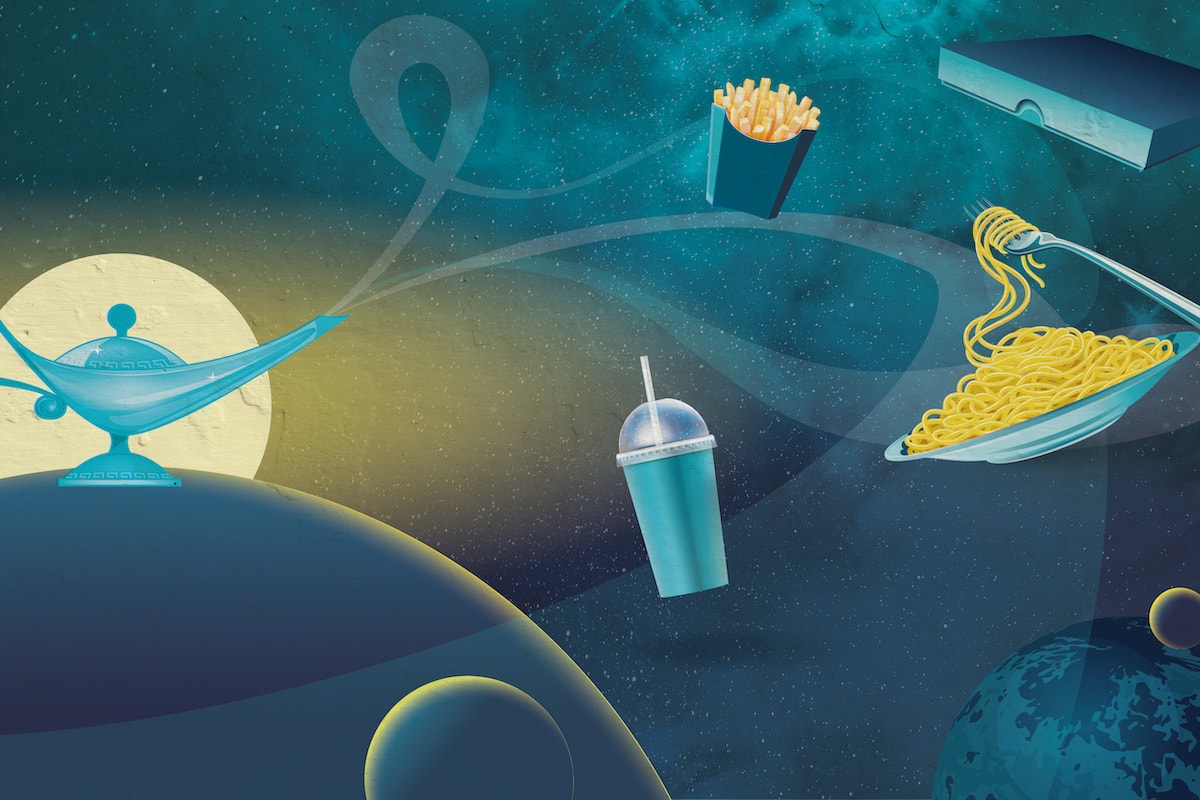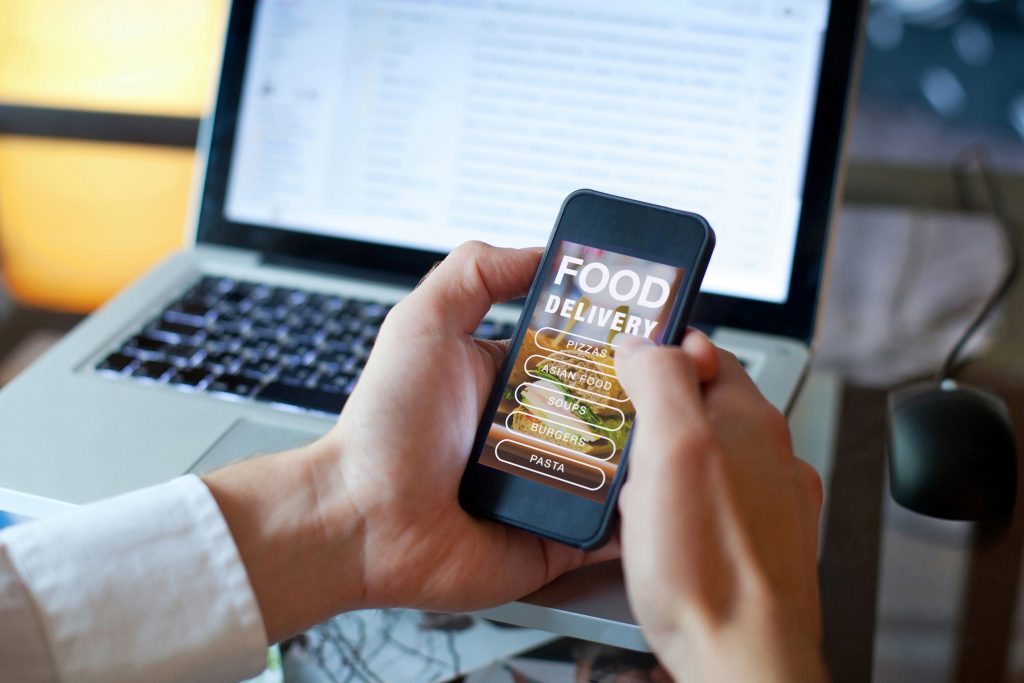Dealing With Guests in Hospitality: Why It’s Critical for Your Success
Dealing with guests in hospitality is more vital than ever. Discover how to improve guest satisfaction and service quality – even with fewer staff.
In the series Utopia Gastronomica, Thomas Primus writes about the future of the hospitality industry. This time, the topic is the Ghost Kitchen trend.

In today's world, we have less and less time. Time efficiency, productivity, and time management are demanded in the workplace. Our private lives are therefore often tightly scheduled. This naturally has an impact on our cooking and eating habits. Both at work and in our private lives. Do we still have time and the desire to cook for ourselves? Yes – but significantly less than before. Do we still visit restaurants and enjoy good local food? Of course – but here, too, we increasingly lack time and the peacefulness that cooking can bring. So, we prefer to have our food delivered to the office or home. Consumers are becoming more and more dependent. And more convenient. Ghost Kitchens know how to abundantly profit from this. It's a technology-driven trend that's been kicking around the industry for a while – but seems to be putting its disruptive energy to even more powerful use. Traditional restaurant businesses should pay attention and, above all, react accordingly. Especially since the Ghost Kitchen concept is becoming increasingly more interesting for another industry player. It should enable them to exploit their already enormous market power even more consistently.
Ghost Kitchens are restaurants without a dining room or service staff. They often don’t even have their own kitchen but outsource the preparation of their food to commercial kitchens. As purely virtual businesses, Ghost Kitchens are designed specifically for food delivery – and can therefore only be visited online by their customers to place orders. Compared to classic restaurants, which have high expenses including rent, furnishings, and cooking and service staff, the virtual approach offers enormous potential for value creation.
As Ghost Kitchens have their food prepared by commercial kitchens, or even temporarily rent kitchens themselves, their cost burden is significantly lower. They invest this money instead in building up and, above all, scaling their restaurant brand(s). This is because a ghost kitchen is usually backed by several or many virtual restaurants that represent a wide variety of cuisine styles – from Asian to Italian to hip, trendy food.
In Austria, the virtual restaurant trend is growing, slowly but surely. The Viennese company RITA Bringt's is one of the first establishments in this genre. Purely vegetarian and organic, the food is cooked here and delivered to customers by bike. With my company FoodNotify, I support RITA Bringt's in digitalizing their business processes and continue to support them on their way to even more digital process efficiency.
Ghost Kitchens originated in the U.S. In 2007, a certain Peter Schatzberg demonstrated his keen sense for disruptive business models by opening his first organic restaurant in New York and realizing just a short time later: Food delivery has much greater potential for success than the stationary restaurant business. So walk-in customers = discontinued model? I wouldn't go that far. Nevertheless, the delivery service he put into practice quickly brought him a whopping turnover of $1 million per year. Schatzberg was in it to win it. More had to happen. And more was possible. In 2013, he launched his first Ghost Kitchen, a radically new restaurant concept – he became a shooting star and pioneer in the industry. In the U.S in particular, virtual restaurants are now a billion-dollar business. It’s a booming business that continues to expand globally. Ghost Kitchens are cooperating with an extremely important player in the industry, without whom the virtual kitchen would remain stagnant: the delivery services, especially the large and powerful ones. One of their crucial tools: the online ordering markets they operate.
In addition to Ghost Kitchens, there are a large number of classic restaurants listed on the online ordering platforms of delivery services. Their dominant representatives in Austria and Germany include: Lieferservice.at, Lieferando, Foodora, Deliveroo, and Pizza.de.
One of the global players is Just Eat, a London-based online ordering market with over 250,000 restaurants and 26 million customers, not just in the UK. In the U.S, GrubHub is a leading delivery service. This online platform is home to over 280,000 restaurants, which in turn, are located in over 4,000 U.S. cities. Over 745,000 orders are processed per day (!).
$365 billion
Source: „Is The Kitchen Dead“ by UBS
€2.15 billion
Source: Statista
So all industry players profit from food delivery – ghost kitchens, the classic restaurants and, of course, the delivery services themselves. But if you consider the power instruments that delivery services are using today, it's clear in whose favor the virtual restaurant concept could shift to in the future; and to whose disadvantage.
Restaurants must pay commissions to delivery services. For orders received by the restaurants via the online order platforms. If I am correctly informed, the corresponding commission payments in the U.S. can amount to an incredible 20–30 % per order total! In Austria, they are comparatively "meager" – for example, 10 % at Lieferservice.at, the local top dog.
The point, however, is that while Ghost Kitchens can, more or less, easily compensate for the commissions incurred (because there are significantly fewer costs for running the kitchen), classic restaurants have to bear a high additional financial burden:
In Austria, a well-run classic restaurant receives an average of 100 orders per day via an online ordering platform. The respective order total amounts to an average of €15. With an order total of €1500 per day, the restaurant must therefore pay €150 commission. The total commission pressure extrapolated per month: approx. €4600 – only for a delivery service.
However, Austrian restaurants are usually listed with two delivery services. Which means that the monthly commission load can rise as high as €10,000 (!) and more. Dizzying for classic restaurants. Profitable for Ghost Kitchen. Very profitable for the delivery services.
Thanks to their digital data interfaces, delivery services know just about everything. Which dishes and menus are ordered. Which people and companies are being delivered to. At what prices. At what times. Which dishes are most popular in which region. Which are not. And so on. This is data control at its best – both in terms of the orders themselves and the personal customer information. Restaurant businesses remain largely, to completely, excluded from this. Data protectionism is worth its weight in gold for delivery services. It can help them fuel the ghost kitchen business even more in the future. And their own.

Delivery services with their online order platforms are already playing out their market power. Through their commission model. Through their delivery infrastructure, which hospitality businesses depend on. And through their data protectionism. If the delivery services also start to build up and establish their own ghost kitchen, their own 360° cycle of food ordering; preparation and delivery would be ensured, as well as an increase in sales for the delivery services. Classic and virtual restaurants, on the other hand, would be out. Cut off from the supply chain, traditional restaurants in particular would have to come up with something to prevent their market position from being jeopardized. After all, their digital expertise is much less than that of Ghost Kitchens. Which doesn't exactly make things easier, but still solvable. The opportunity is there. If it is recognized and implemented as soon as possible.
Classic restaurants are expanding their stationary operations with their own ghost kitchen model. It goes without saying that this requires a certain amount of technology and digitalization know-how, strategic forethought, as well as a willingness to experiment.
It's not just a matter of building, testing and implementing your own ordering technologies. It's a matter of playing with the use of a suitable virtual model.
For example, does it make sense to integrate the ghost into the existing stationary operation? Or should a separate business be established to avoid capacity bottlenecks or even cannibalization effects between stationary and virtual operations?
In any case, a still quite young, but innovative tool for cooking would offer: Multitenant kitchen centers. These consist of a software architecture that is used equally by several hospitality businesses – without the need for data to be viewed by each other. Kitchen United as well as Cloud Kitchens are two U.S. pioneers in this field.
In addition, classic hospitality businesses in particular will have to deal with the robot-assisted preparation of food. Why? Quite simply because the cost apparatus can be made much leaner. In the U.S., artificial intelligence has already been used in the kitchen to bake pizzas and to prepare burgers, fully automatically. Software- and sensor-supported throughout the entire production process and therefore, more time- and cost-efficient than previously imaginable.
And last but not least, future meal delivery must also be considered. This will require in-house digital drivers, as well as the selection and implementation of suitable delivery providers.
The direction in which classic restaurant businesses are oriented is narrowing. But if they are open to new technologies and the dynamics of the market, they can harness the disruptive energy of the virtual restaurant concept for their own business. And do this successfully. I believe in this. Because compared to purely virtual operations, stationary operations have what is perhaps the decisive advantage.
It's the reputation and the (brand) awareness that they have already built up over the past years. As a guest, you know exactly what you're getting from your host: a real, personal and independent restaurant atmosphere, in which the food served is just as top-notch as the service provided by the staff. A high level of customer experience, which can be raised to a new level, with a new type of service module – giving your (regular) guests the choice: Experience pleasure as usual in the restaurant on site or at home or in the office. After all, we know how hectic our professional and private lives these days are.
I, for one, very much wish that classic restaurant businesses would start to think and act in a new, or at least, more open way. Not just in a few years, but very soon.
Because even though many of these establishments now make use of food delivery – they should not feel too safe with it.
Dealing with guests in hospitality is more vital than ever. Discover how to improve guest satisfaction and service quality – even with fewer staff.
From sustainability to Ghost Kitchen: Discover the 7 hospitality industry trends that experts expect to see in 2022.
Mastering key metrics in the hospitality industry is essential to effectively managing a successful and customer-centric business. Let us guide you...
Make sure you never miss out on updates and trends about digitalization in the hospitality industry by subscribing to our monthly newsletter. You will receive useful information delivered directly to your inbox.